7 Nights Corfu Yacht Charter Itinerary
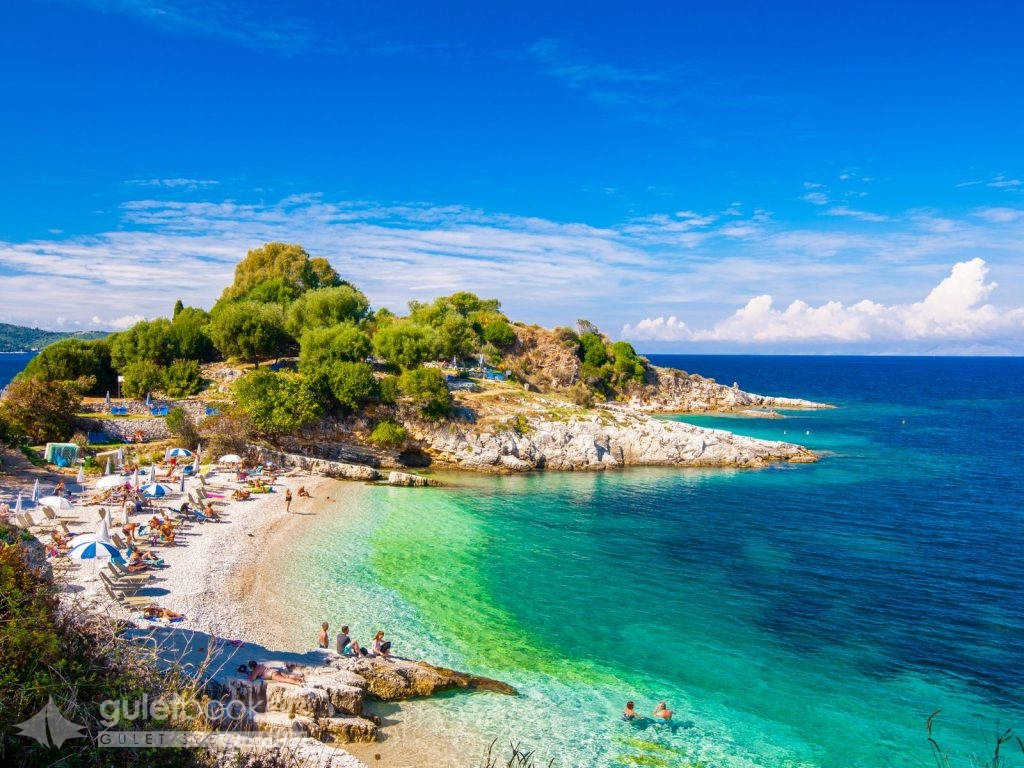
Cosmopolitan Kerkyra is probably the best known Ionian island and one of the Mediterranean’s most popular destinations. It attracts hundreds of thousands of tourists annually and is an inexhaustible source of artistic inspiration. Its enormous cultural heritage, combined with its natural beauty, ideal climate, inviting beaches, and noteworthy sights make it a prestigious and attractive destination for Greek and foreign visitors alike. Kerkyra was named after a woman. Mythology has it that when Poseidon fell in love with Korkyra, Aesopos’ daughter, he retreated with her to this island and named it after her. Faiakas, the boy born to them, established the Kingdom of the Faiakes which, according to Homer, was Odysseus’ last stop before his return to Ithaca. Kerkyra is known abroad as Corfu because of the island’s two acropolises [perched on two hilltops (corfés in Greek)] within the city of Kerkyra. Its other ancient name was Drepanon (scythe) due to the island’s shape.
Corfu determines Greece’s sea borders with neighbouring Italy and Albania. It is therefore its strategic position that has made her the bone of contention among conquerors whose presence on the island stamped its culture, tradition, and customs. Venetian, French, and British rule left behind strong elements of western culture which eventually blended with the island’s Greek identity. In 1864, Corfu became part of Greece. It is the birthplace of Ioannis Kapodistrias, modern Greece’s first governor; scholars Andreas Moustoxydis and Iakovos Polylas; composer Nikolaos Mantzaros who set the Greek National Anthem to music; Spyros Samaras who set the Olympic Anthem to music; and the Theotokis Family numbering eminent politicians and writers amongst its members.
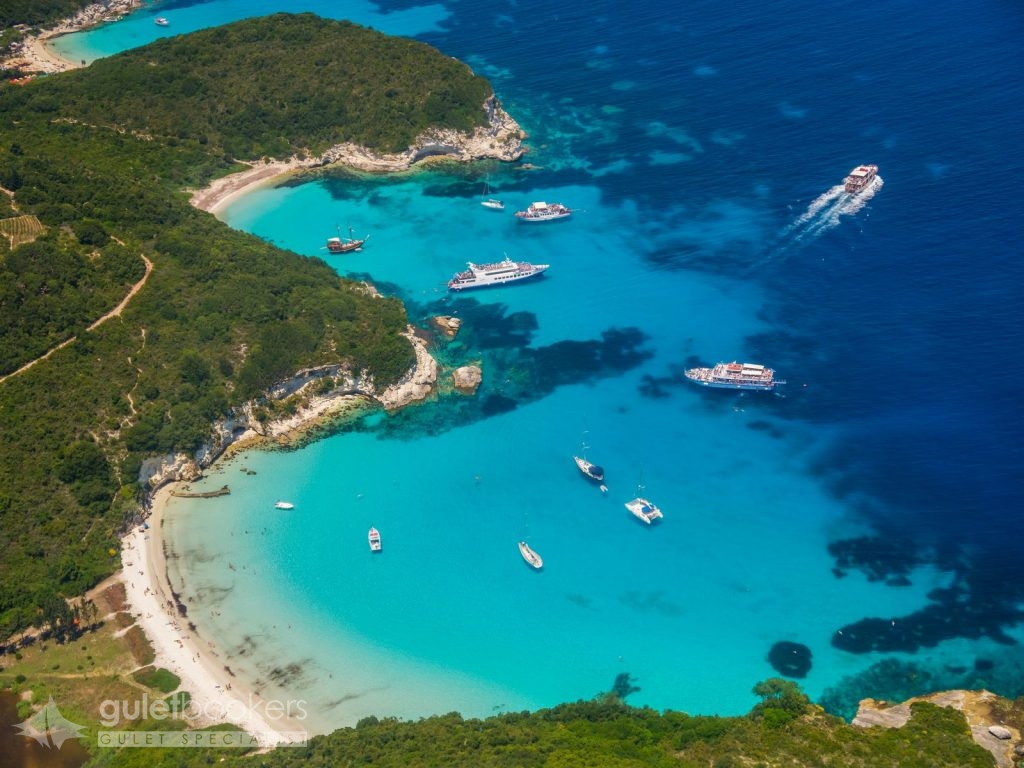
All that you need for a quiet, memorable vacation is on this island: lacy beaches, small coves, green hills with olive trees, imposing cliffs, sea caves and particularly interesting hewn stone cisterns otting the island. Its small size (area: 13 sq. km, coastline: 30 km) invites the visitor to explore it from end to end on foot. Tradition has it that Paxoi used to be part of Corfu Island until Poseidon tore it apart with his trident so that he may have a secluded spot to enjoy the company of his beloved Amfitriti. Under Venetian rule, commercial, maritime and agricultural activities thrived on the island.
Gaios is the island’s capital town and port, ideal for sun-and-sea vacations. The image of the port wedged in the narrow channel between Paxoi island and Agios Nikolaos isle is considered one of the prettiest in the Ionian Sea. There are cafés and fish tavernas by the pier.
Antipaxoi (Antipaxi)
It is a pretty, miniature of an island, southeast of Paxoi (3 nautical miles from Gaios), known for its fantastic beaches. Voutoumi, a beach of exotic beauty, is among the finest in Greece. Another two gorgeous beaches are Vrika and Mesovrika. Agrapidia is the small port connecting the island with Paxoi. There is a group of rocky isles opposite the southern coastline.
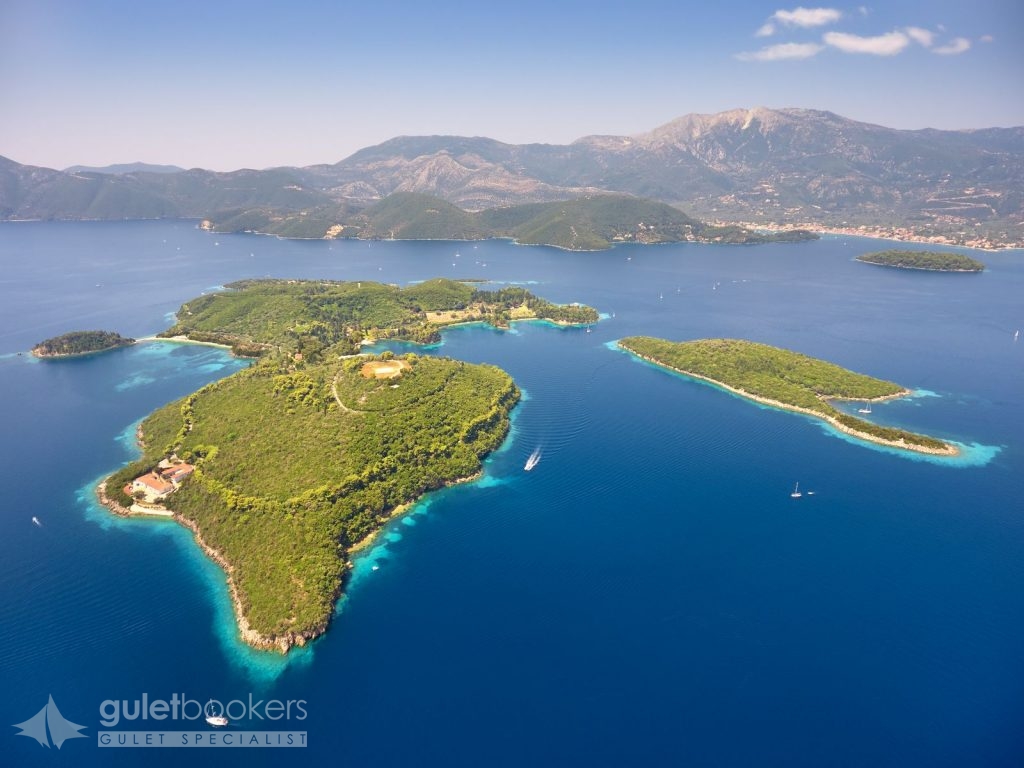
Lefkada or Leucas Island is surrounded by a total of 24 islets – Aristotle Onassis’ Skorpios being one of them. It connects to the opposite coast of Central Greece via a floating swing bridge (length: 50 m). The bridge offers easy access to Lefkada to visitors from all over Greece as it connects to parts of Egnatia Odos [Road] junction, Preveza-Aktio sea tunnel, Central Greece’s Aktio International Airport and the ports in Igoumenitsa (Ipeiros) and Patras (Peloponnese). On Lefkada you will find noteworthy sights, churches and monasteries, picturesque villages, lush vegetation, idyllic coves of turquoise waters, busy and secluded beaches of stunning beauty, a significant cultural heritage and hospitable locals. Up until the 6th c. BC, Lefkada was part of the Akarnania coastline. It owes its name to Lefkata, the cape with the towering rugged white cliffs on the island’s southern tip. Lefkada has been inhabited since Neolithic times and flourished as a Corinthian colony. In 1204, after Constantinople’s occupation by the Franks, it became part of the Despotate of Epirus [Ipeiros]. Later on, the Turks, Venetians, French and British occupied the island. In 1864, it became part of Greece along with the other Ionian Islands.
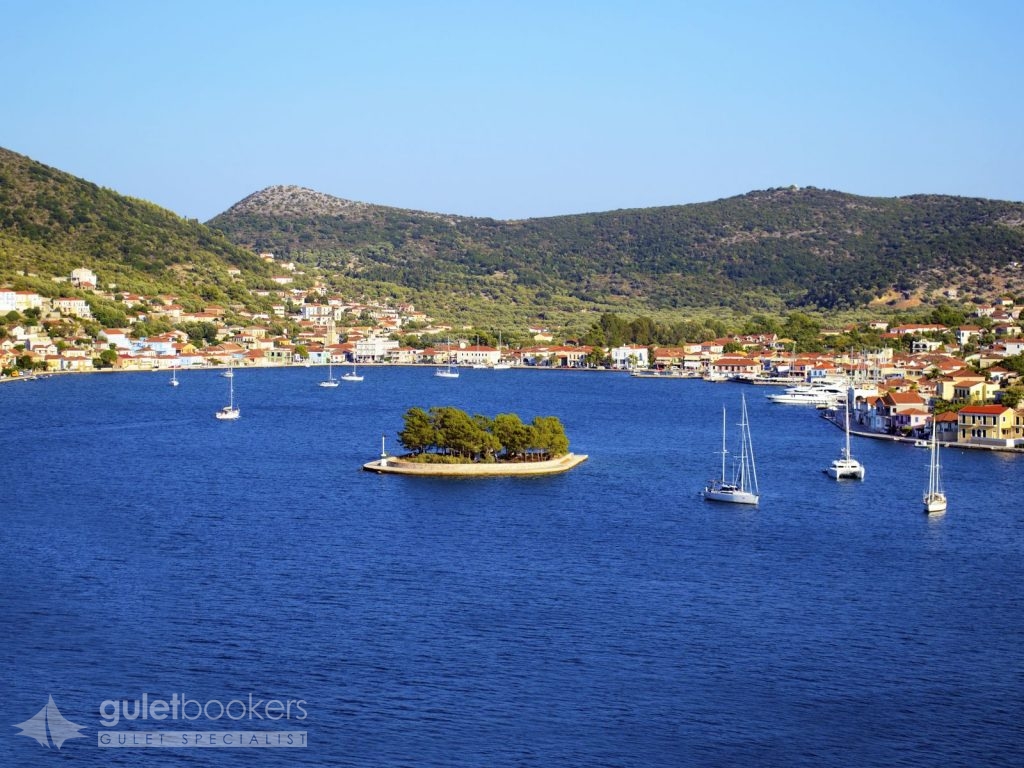
Low profile, hospitable Ithaca Island (or Thiaki as the locals call it) is ideal for relaxed vacations. The second smallest Ionian island, after Paxoi, is said by many scientists to have been the kingdom of Homer’s Odysseus [Ulysses] and has been inhabited since prehistoric times. It flourished during the Mycenaean Period (1500-1100 BC) only to fall into obscurity after that glorious period. A number of locals who had settled on neighbouring islands, repatriated during the Venetian occupation (1504). In 1797, Ithaca came under French, then Russian and then Turkish rule until 1809 when it became a British protectorate. It played an important part during the 1821 War of Independence and was united with Greece on May 21st, 1864, along with the rest of the Ionian Islands.
Vathy is Ithaca’s capital town and port. The Venetian influence is manifest in this heritage small town featuring beautiful tiled roofs, and picturesque kantounia (cobblestone alleys). After the ravaging 1953 earthquake, the biggest part of the town had to be restored or rebuilt anew. The 1668 Sotiras chapel stands on Lazaretto isle, at Vathy’s port entrance. Under British rule the islet was used as quarantine for infectious diseases and later as a jail.
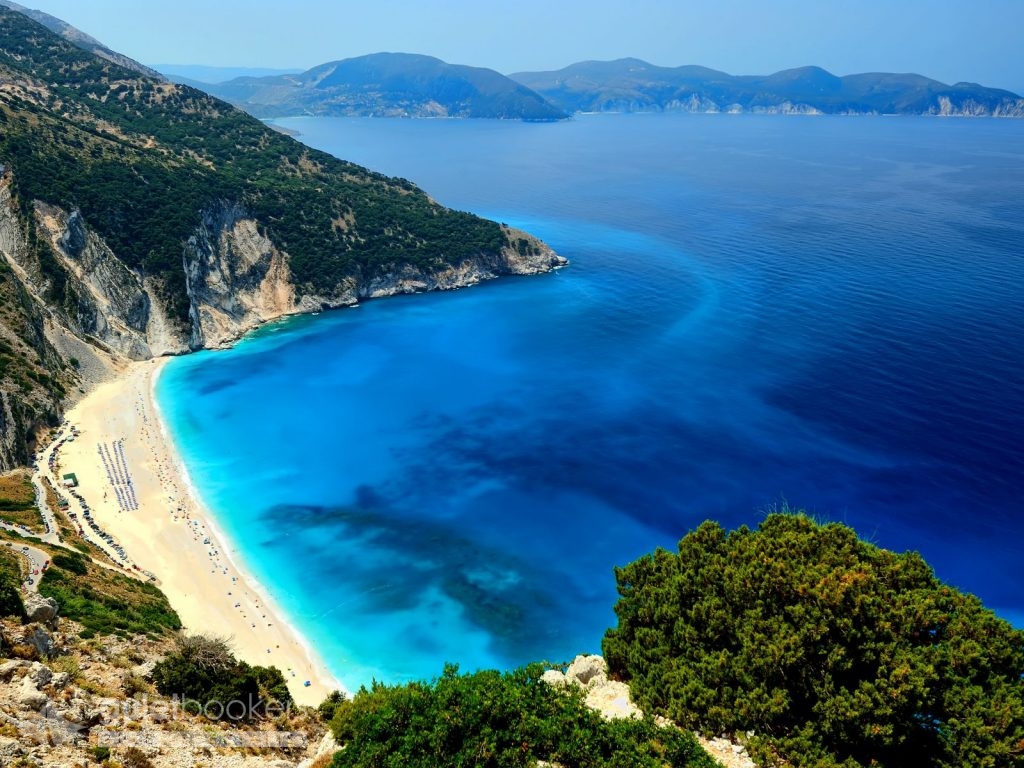
Magnificent scenery, amazing beaches, a rich cultural heritage, great monuments, mountains, castles, distant monasteries and the cheerful, hospitable people are the assets that have turned Kefalonia Island (or Cephallonia) into one of the most attractive destinations. The largest Ionian island lies in the mouth of Patraikos Gulf, between Zakynthos (or Zante) and Lefkada. It is endowed with an exquisite nature and diverse geological formations, countless coves, and lush vegetation. Ainos Mountain Range towers in the distance (a National Reserve area since 1962 with an abundant and diverse flora and fauna).
In Byzantine times, Kefalonia was part of both the Achaia province and the Eastern Illyria district. Throughout the centuries, it has successively been under Norman, Frankish, Venetian, and Turkish rule. It became Greek territory on May 21st, 1864, along with the rest of the Ionian Islands. During WWII, local resistance to Italians and Germans was sturdy. The film “Captain Corelli’s Mandolin”, shot on location on this island, is about such an account of resistance.
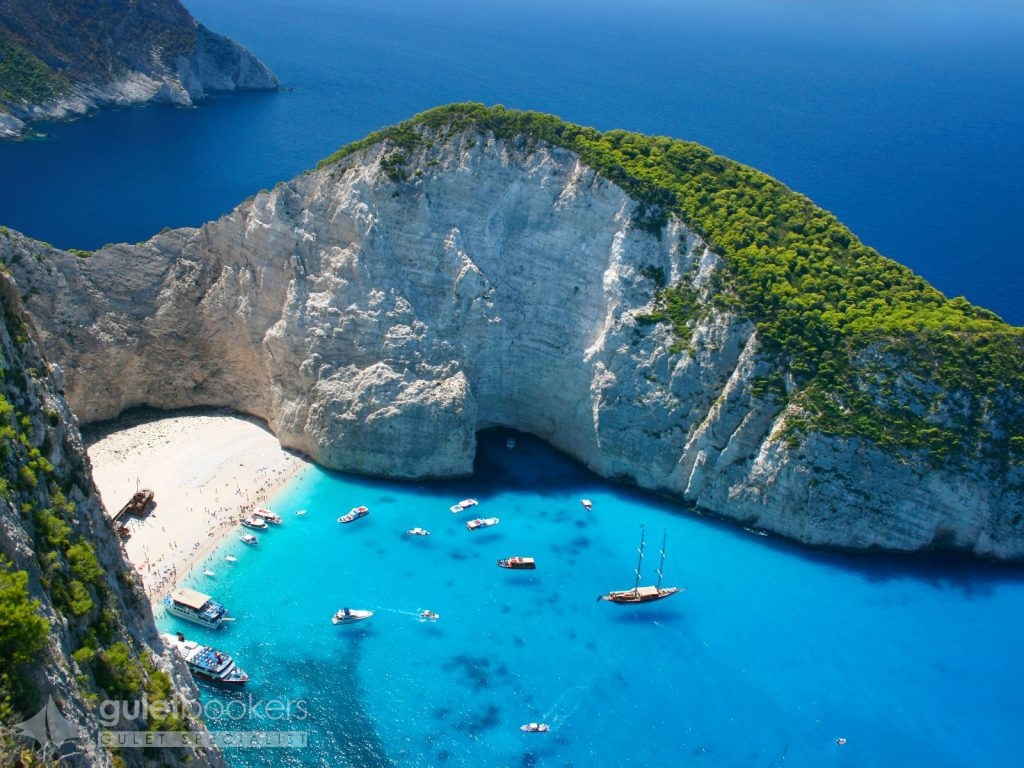
Zakynthos is a green island with fertile fields and a temperate climate. What makes it very interesting is the ever-changing countryside that has resulted in different types of beaches. On the island’s southeastern part you will find sheltered coves with sandy beaches of deep blue waters. However, if rugged cliffs and an interesting underwater world are to your liking, you should prefer the western part of the island.
The Venetians, who ruled Zakynthos from 1484 until 1797, called the island “Fioro di Levante” (flower of the East) as there are over 7,000 species of flowers on Zakynthos. The third largest island of the Ionian Sea, after Corfu and Kefalonia, is internationally known by the name of Zante. The island’s first inhabitant is said to have been Zakynthos, son of Dardanos, Frygia’s king. It is believed that he built an acropolis on the site where the Venetian fort was constructed at later times.
Venetian architectural influence has left its stamp on Zante despite the damage sustained due to the seismic activity in the area. After the ravaging 1953 earthquake and the ensuing fire, a number of historic buildings and churches burned to the ground. Consequently, the significant treasures these buildings were housing were buried in the ashes. The town of Zante was rebuilt according to an urban plan where strict anti-seismic regulations applied, and, to a large extent, adhered to the city’s former architectural character. In Zante rules also apply concerning the protection of the loggerhead sea turtle (Caretta – caretta) and the Mediterranean monk seal (Monachus – monachus).
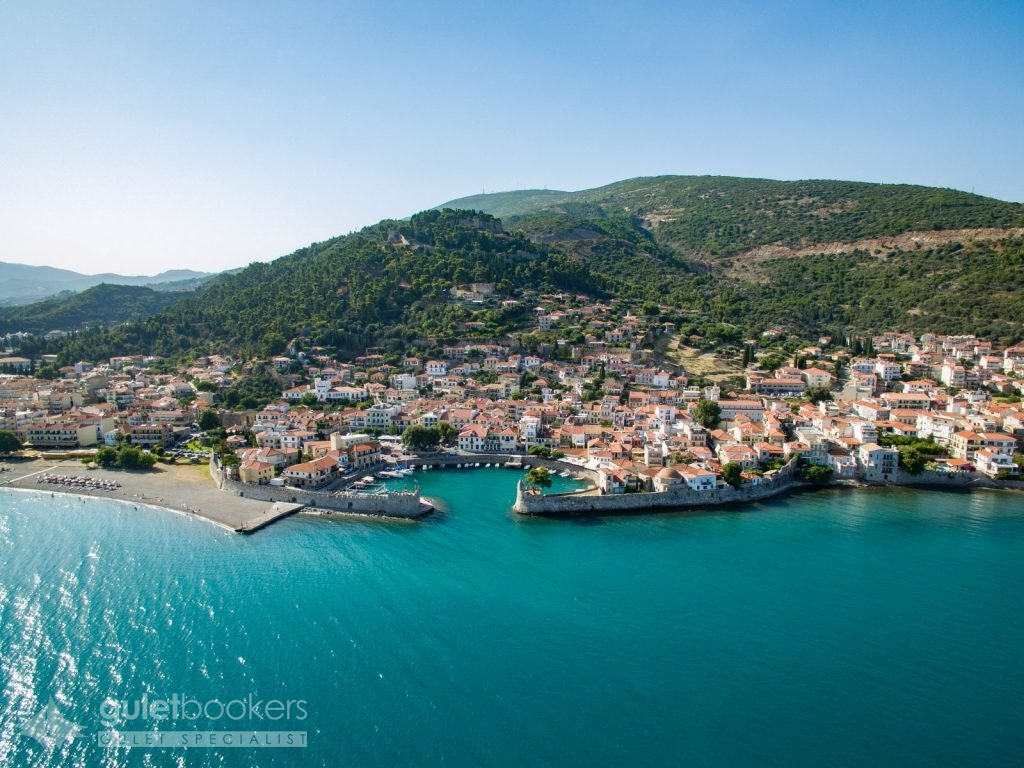
Nafpaktos, built between Antirrio and Mornos River, is the most beautiful city in the region of Aitoloakarnania. It looks like a paradise with its beautiful sandy beaches and the majestic mountain embraces the town of Nafpaktia. There are two most important and magnificent monuments of the city; Venetian Castle and Venetian Harbour. The first things that attracted visitors to Nafpaktos; comfortable, spacious and tidy roads, traditional – well reserved naval houses and buildings, open air restaurants and cafes usually located at the seaside impress to people of all ages. All the streets open to the port and perhaps the most beautiful smallest port of the Mediterranean Sea! At the East side of the tower, there is an old lighthouse and Fethiye Tzami (mosque) that was built in 1499. The marble covered building reminds us of the famous sea war in 1571. In the western part and next to the sea, there are statues of the legendary captain Giorgos Anemogiannis and the famous Spanish writer Miguel de Cervantes.
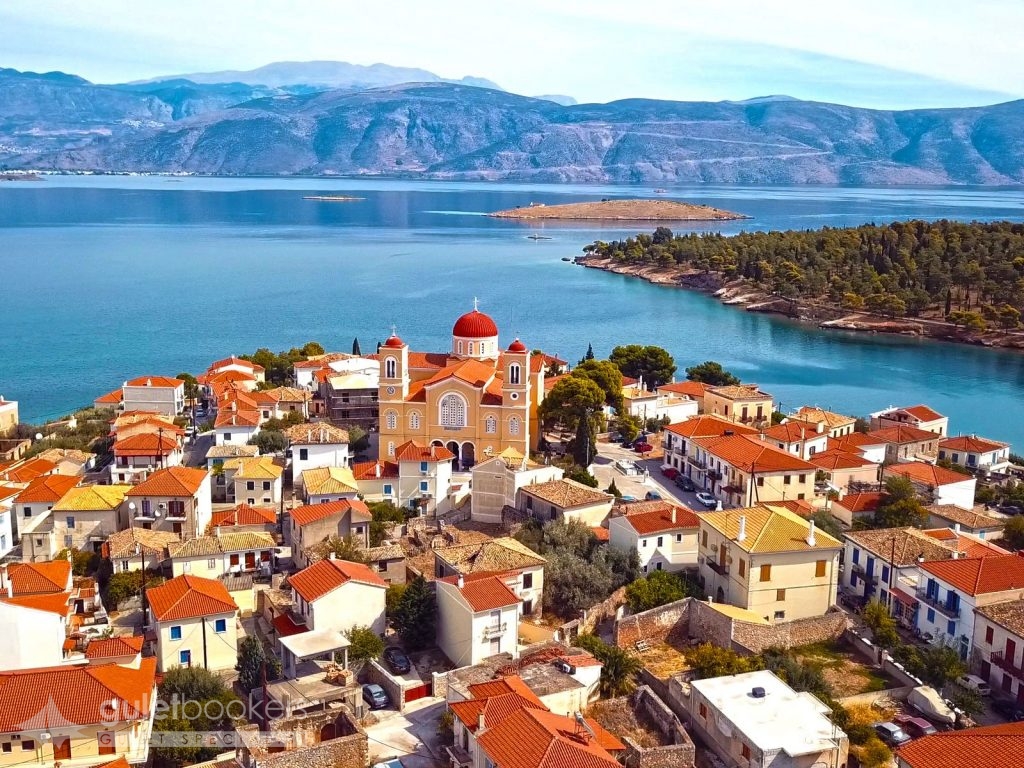
Thanks to the stunning mountainous landscapes of Fokida that people reach a city with a sense of luxury, tradition and history. The remarkable pride and pleasure of the southern coast of central Greece is named: Galaxidi. The mansions and the cobbled narrow streets call and guarantee a relaxing time in the town. Traditional architectural elements combine the ancient history with colored appearance of buildings, marble arches around the doors, flower and pebble stoned gardens, and stone-decorated balconies with figures. There are many building are well-preserved in the city town; the Tsalaggyras mansion, the Folk Art Museum, housed in Aggelis mansion, the Girls’ School, and the Mpourzeiko mansion. You will find some ancient monuments in town as well which are worth to see: The tomb of King Locros and remains of the walls of ancient Oianthi.
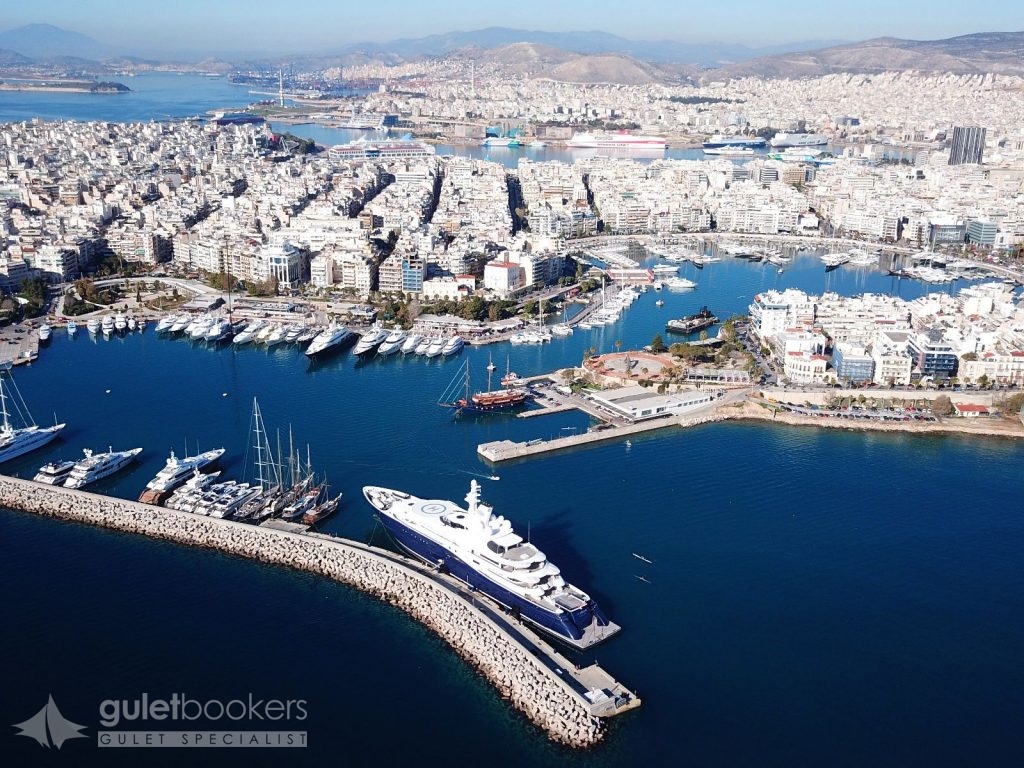
Athens, having been inhabited since the Neolithic age, is considered Europe’s historical capital and one of the world’s emblematic cities. During its long, everlasting and fascinating history the city reached its zenith in the 5th century B.C (the “Golden Age of Pericles”), when its values and civilization acquired a universal significance and glory. Political thought, theatre, the arts, philosophy, science, architecture, among other forms of intellectual thought, reached an epic acme, in a period of intellectual consummation unique in world history. Therefore, Athens constituted the cradle of western civilization. A host of Greek words and ideas, such as democracy, harmony, music, mathematics, art, gastronomy, architecture, logic, Eros, euphoria, and many others, enriched a multitude of languages and inspired civilizations. Over the years, a multitude of conquerors occupied the city and erected splendid monuments of great significance, thus creating a rare historical palimpsest. Driven by the echo of its classical past, in 1834 the city became the capital of the modern Greek state.
During the two centuries that elapsed, however, it developed into an attractive, modern metropolis with unrivaled charm and great interest. Year-round visitors are fascinated by Athens, one of the most attractive and charming capitals of Europe.
Send Enquiry Corfu – Ionian Islands – Athens
This itinerary is only bookable for private charters. If you are interested in a cabin charter, please contact us for more information.
Guletbookers is the independent gulet charter company located in Bodrum - Turkey and dedicated to giving you
the best gulet charter possible from the widest choice of gulets possible.
Get in touch via WhatsApp for Seamless Communication.
Talk to our experts and browse through more yachts.







